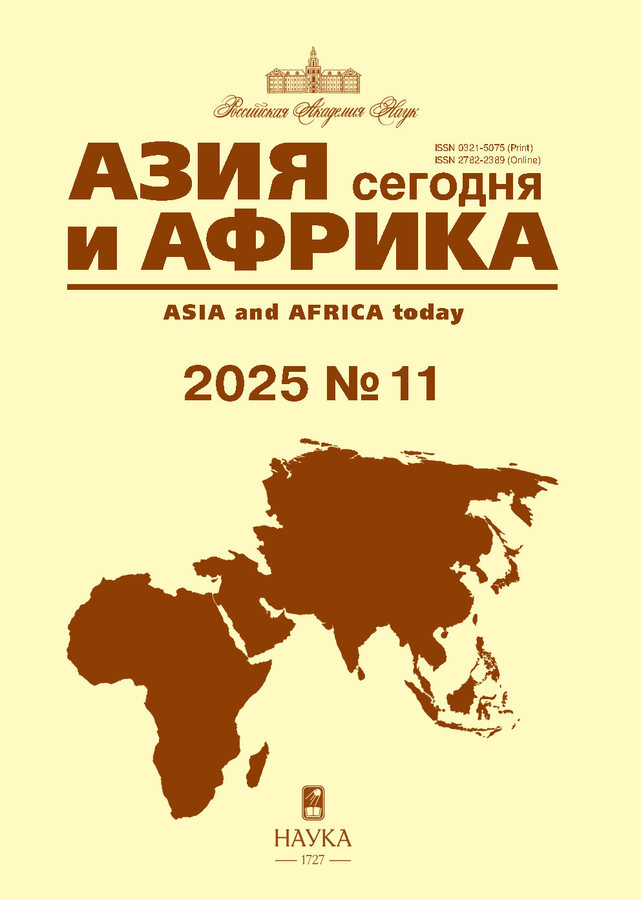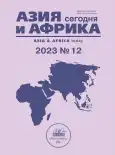Punjabiyat vs “Punjabistan”: Features of Punjabi Ethnic Nationalism (A Case of Pakistan)
- Authors: Filimonova A.L.1
-
Affiliations:
- Lomonosov Moscow State University
- Issue: No 12 (2023)
- Pages: 41-49
- Section: Articles
- URL: https://journals.rcsi.science/0321-5075/article/view/249685
- DOI: https://doi.org/10.31857/S032150750029005-7
- ID: 249685
Cite item
Full Text
Abstract
Keywords
About the authors
Alina L. Filimonova
Lomonosov Moscow State University
ORCID iD: 0000-0001-5982-9612
Russian Federation, Moscow
References
- Chandan A. The Romantic Idea of Identity. The Tribune India. 2018. April 29. https://www.tribuneindia.com/news/archive/features/the-romantic-idea-of-identity-581100 (accessed 01.07.2023)
- Бочковская А.В. Неисчерпаемые источники конфликтов и идентичностей. Под небом Южной Азии. Территория и принадлежность: геополитическое конструирование и субъектность восприятия обитаемых пространств. Рук. проекта И.П.Глушкова, отв. ред. А.В.Бочковская. М.: Восточная литература. 2016. С. 581–595.
- Kaur H. Sanjha Punjab and the Idea of Punjabiyat: A Counter-Discourse to the Rhetoric of Hyper Nationalism. Dhaara. 2021. November 25. https://dhaaramagazine.in/2021/11/25/sanjha-punjab-and-the-idea-of-punjabiyat-a-counter-discourse-to-the-rhetoric-of-hyper-nationalism/ (accessed 23.06.2023)
- Nafeez N. 6+ Punjabi-Speaking Countries: An Exclusive Peek. Ling. 2022. October 23. https://ling-app.com/pa/punjabi-speaking-countries/ (accessed 12.07.2023)
- Ibn Khaldun. 2015. The Muqaddimah: An Introduction to History. Princeton: Princeton University Press.
- Ramey M.H. 1985. پنجاب کا مقدمہ (The Case of Punjab). Lahore: Jang Publishers. (In Urdu).
- Ismail N.F., Abdul Rahim A. 2018. Ibn Khaldun’s Theory of ‘Asabiyyah and Its Impact on the Current Muslim Community. Journalism and Mass Communication. Vol. 8, № 6, pp. 287–294.
- Wilson J. 2016. India Conquered. N.Y.: Simon & Schuster Ltd.
- Ma Sh. 1990. Ethnonationalism, Ethnic Nationalism, and Mini‐Nationalism: A Comparison of Connor, Smith and Snyder. Ethnic and Racial Studies. Vol. 13, № 4, pp. 527–541, doi: 10.1080/01419870.1990.9993688
- Национализм в мировой истории (под ред. В.А.Тишкова, В.А.Шнирельмана). М.: Наука, 2007.
- Нации и национализм на мусульманском Востоке. Отв. ред. В.Я.Белокреницкий, Н.Ю.Ульченко. М.: ИВ РАН, 2015.
- Guha A. 1979. Great Nationalism, Little Nationalism and Problem of Integration: A Tentative View. Economic and Political Weekly. February. Vol. 14, № 7/8, pp. 455–458.
- Roy Burman B.K. 1989. Problems and Prospects of Tribal Development in North-East India. Economic and Political Weekly. April. Vol. 24, № 13, pp. 693–697.
- Prasad B. 1941. The Hindu-Muslim Questions. Allahabad: Kitabistan.
- Oommen T.K. 1999. Conceptualising Nation and Nationality in South Asia. Sociological Bulletin. Vol. 48, № 1/2, pp. 1–18.
- Jabbar J. 2019. What Is Pakistaniat? 41 Elements of the Unique Paksitani National Identity. Karachi: Paramount Books.
- Ayres A. 2009. Speaking Like a State: Language and Nationalism in Pakistan. New York: Cambridge University Press.
- Samad Y. 1995. Pakistan or Punjabistan: Crisis of National Identity. International Journal of Punjab Studies. Vol. 2, № 1, pp. 23–42.
- Yong T.T. 1995. Punjab and the Making of Pakistan: The Roots of a Civil‐Military State. South Asia: Journal of South Asian Studies. Vol. 18, № 1, pp. 177–192. doi: 10.1080/00856409508723250
- Sheikh F. 2009. Making Sense of Pakistan. N.Y.: Columbia University Press.
- Paracha N.F. The Other Punjab. Dawn. 2015. May 31. https://www.dawn.com/news/print/1184953 (accessed 25.06.2023)
- Awan M. A Case of Punjabi Nationalism. The News. 2015. July 05. https://www.thenews.com.pk/tns/detail/558941-a-case-of-punjabi-nationalism (accessed 25.06.2023)
- Raj. A. The Case for Urdu as Pakistan’s Official Language. Herald. 2017. May 11. https://herald.dawn.com/news/ 1153737 (accessed 14.07.2023)
- Подробнее см.; Бочковская А.В. «Панджабский вопрос» и сикхская диаспора: призывы к сецессии в XXI веке. Азия и Африка сегодня. 2023. № 11. С. 32–40. doi: 10.31857/S032150750028610-3
Supplementary files











